Sundance New Frontier Diaries 2022 (Updated 1/24/22)
Notes and capsule reviews from our team
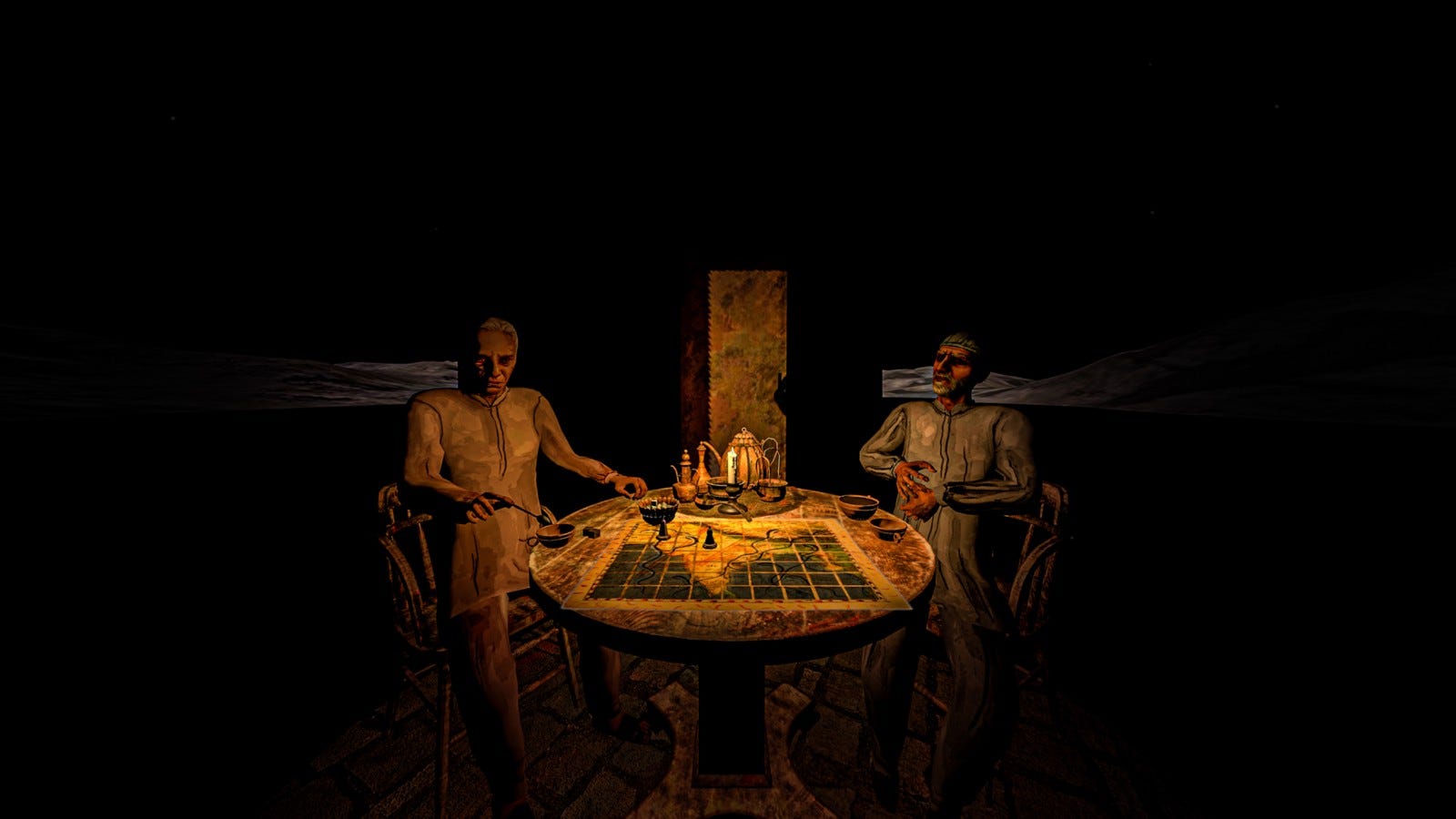

No Proscenium’s Noah Nelson and Kathryn Yu are covering the 2022 Sundance Film Festival’s New Frontier for us. This festival diary will update through the event with notes, thoughts, and capsule reviews through the end of the fest.
How to Get Into the New Frontier “Spaceship” on your VR Headset:
After you’ve gotten your handy Explorer Pass, go to http://newfrontier.sundance.org on your desktop/laptop. Log in to your Sundance Festival account and then configure your avatar (it helps to have a profile picture handy). Look for your personalized code on the right (it’ll be a series of random-looking letters and numbers). Now, go get your headset. Open a browser window in VR to that same URL; you’ll be prompted to enter in the code that you were shown before. Presto! You’re in.
Just bear in mind that the New Frontier Gallery space is where you’ll find descriptions to each of the projects (they’re organized spatially by format) but for many of the experiences, you won’t actually be viewing the projects within the Gallery.
Viewable on desktop: 32 Sounds (livestream in the Cinema House); Cosmogony (livestream in the Cinema House); Gondwana (custom PC app, also PC VR); The Inside World (Discord); Suga (live performance in Mozilla Hubs); Surrogate (browser-based)
Requires PC VR: Diagnosia (Viveport); Flat Earth (custom app)
Only on Quest: Child of Empire; On the Morning You Wake (To the End of the World); The State of Global Peace; They Dream In My Bones — Insemnopedy II; This Is Not a Ceremony
Mobile app: Atua (QR code given at live event); Seven Grams
— Kathryn Yu
Alphabetical By Title
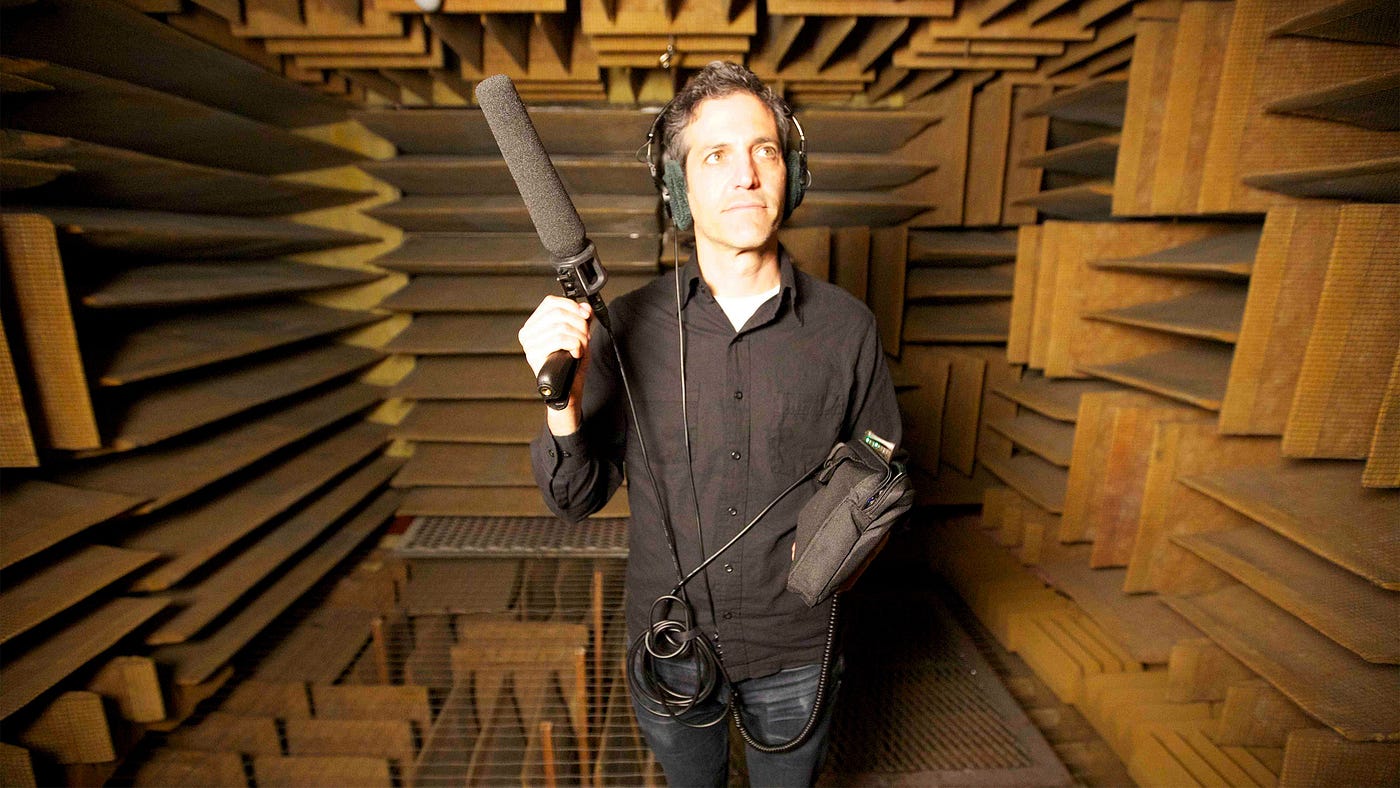
32 Sounds (web browser): Documentarian Sam Green and musician JD Samson return with a followup to last year’s 7 Sounds with a new 90+ minute project. However, this time around, Green appears to have returned to his strengths and made a more traditional documentary film and Samson is given more opportunities to shine in the piece.
While the audience was asked to mostly experience 7 Sounds in darkness; this time around, 32 Sounds displays accompanying visuals while layering in some very light participatory elements (which are optional) and occasional binaural audio moments. Whereas in 7 Sounds I struggled to find a throughline between the seemingly disparate sounds on display, 32 Sounds uses the subject matter of sound — in all its myriad forms — to interview a series of people whose lives and livelihoods are entangled in sound, from a foley artist to a Deaf sound artist to a musician who accidentally caught a bombing on tape. The result is an touching exploration of the human experience via sound, ultimately allowing Green to discuss a loss in his own life and how sound plays a part in his memories. — Kathryn Yu (1.20.22)
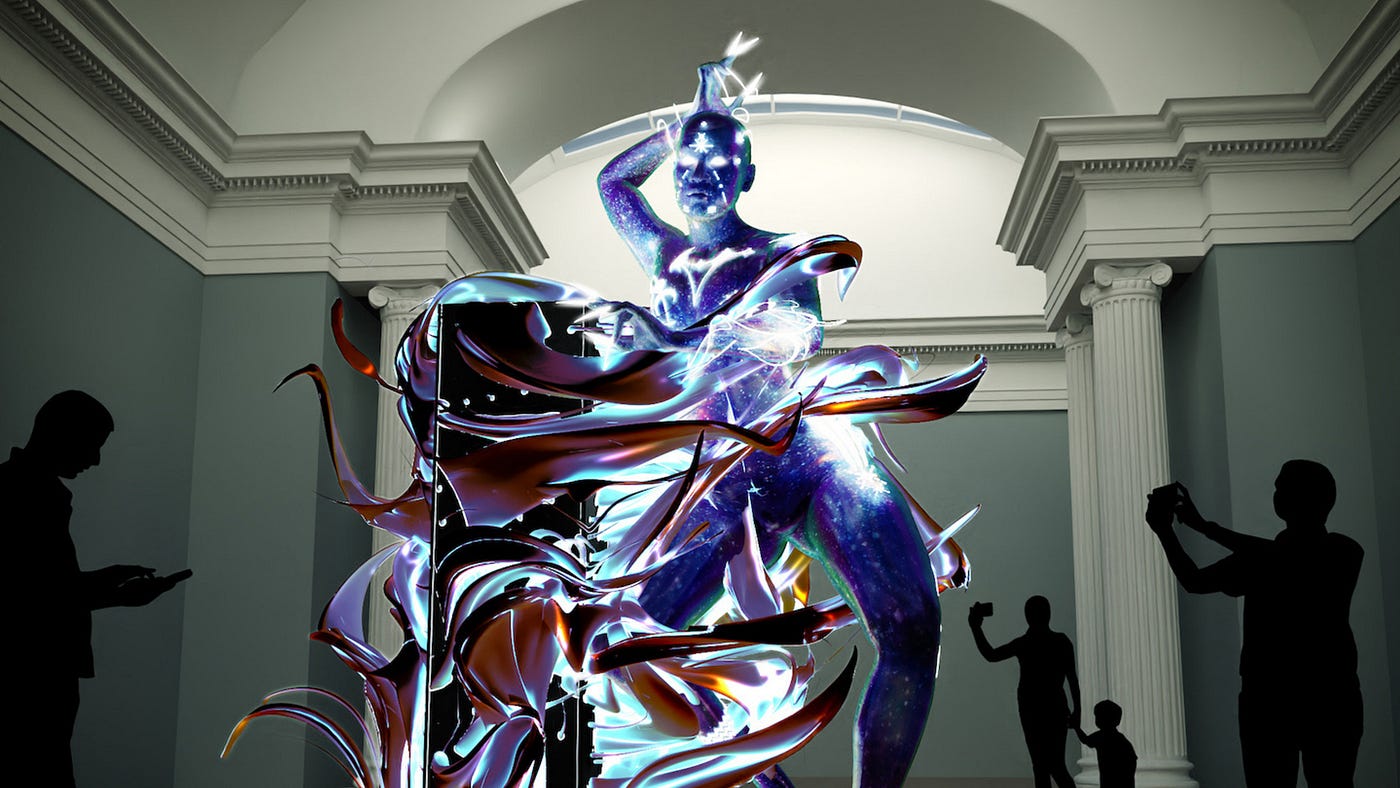
Atua (iOS): This gorgeous but short AR piece from queer Indigenous artists Tanu Gago and Jermaine Dean lets the audience put a digital version of Te Kore (the void) from Maori mythology in their living rooms.
Even though the experience is only five minutes long, Dean’s sound design is exquisite and the powerful voiceover performance from actor Nathaniel Lees really brings the deity to life. However, I couldn’t help but feel as if being trapped inside of a smartphone in someone’s house wasn’t necessarily the best way to truly experience an encounter with Te Kore, who truly sounds larger than life, but idly stayed in the same place the entire time on my phone screen. I’d love to see this project make the leap to bigger and/or more immersive screens. — Kathryn Yu (1.21.22)
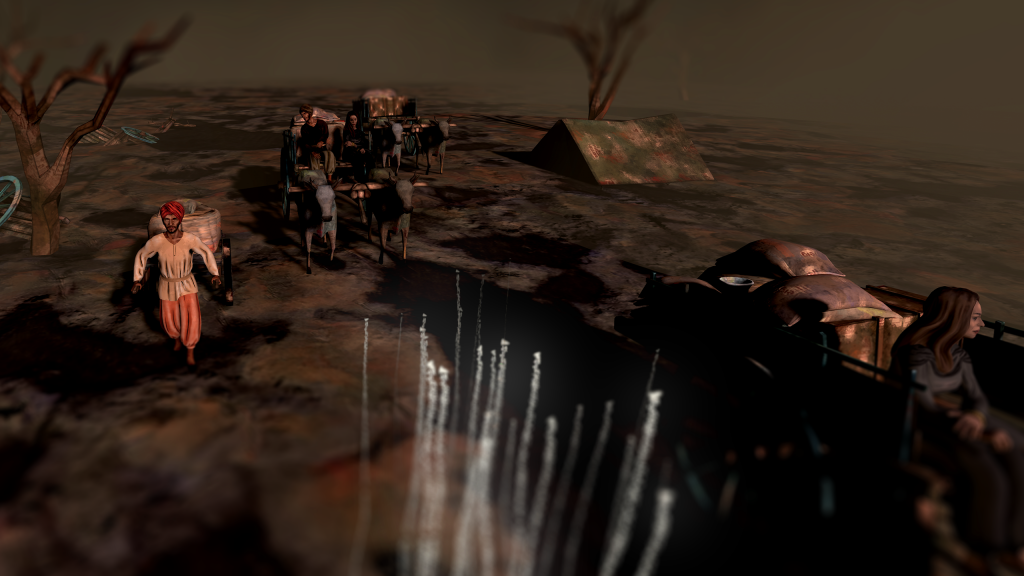
Child of Empire (Quest 1 and 2): This lovingly detailed animated VR documentary tells the story of the 1947 Partition of India and Pakistan through the lens of two old friends sharing some chai tea and playing a board game. One is Indian Hindu, the other Pakistani Muslim.
Now old men, each one shares their memories of being only seven years old when forced from their homes. The participant is able to witness the frightening and tragic events unfolding from the perspective of each child with some light moments of interactivity.
Hearing these personal histories in Child of Empire while seeing images like a crowded refugee camp, a dangerous train car, or a family traveling their new country solely on foot makes for a deeply moving experience. — Kathryn Yu (1.20.22)
This one is a gut punch.
Child of Empire tells the story of the Partition of India through the parallel stories of two men who went through the largest forced migration in human history: one Hindu, the other Muslim.
Composite figures to be sure, this is more docudrama than documentary, the piece sets the stage in stunning fashion with a pre-title “puppet theatre” sequence that itself could have been the whole of the aesthetic. Yet the creators here are not content to leave us outside history, looking in, but plunge us into the record as only VR can.
The majority of the work mixes realtime rendered vignettes with off-screen narration that lays out the human scale element of a story that in so many ways is too big to wrap one’s head around. This, in fact, is a theme I keep coming back to in much of the New Frontier selections this year, as VR artists wrestle with telling the stories that all but invisibly shape our world by shifting scales between the macro and the micro, the statistical and the individual. Taken as a whole, a fuller picture emerges and — most importantly — the human cost is connected to concepts that otherwise can leave you numb.
To my shame, and more pointedly to the shame of my education given the number of people from India and Pakistan who live in the Bay Area where I grew up, I knew little about the Partition of India beyond that it happened. That something so unquestionably monstrous was imposed upon millions all in the name of political expediency fills me with equal parts rage and despair.
Humanity is very good at being casually cruel to each other, and history is largely the record of this. By grounding an overwhelming historical fact in the human details and leveraging the medium’s ability to evoke a sense of place using impressionistic visuals laid out with theatrical logic, Child of Empire accomplishes the feat of making something relatable without filing off all of the edges. — Noah Nelson (1.24.22)
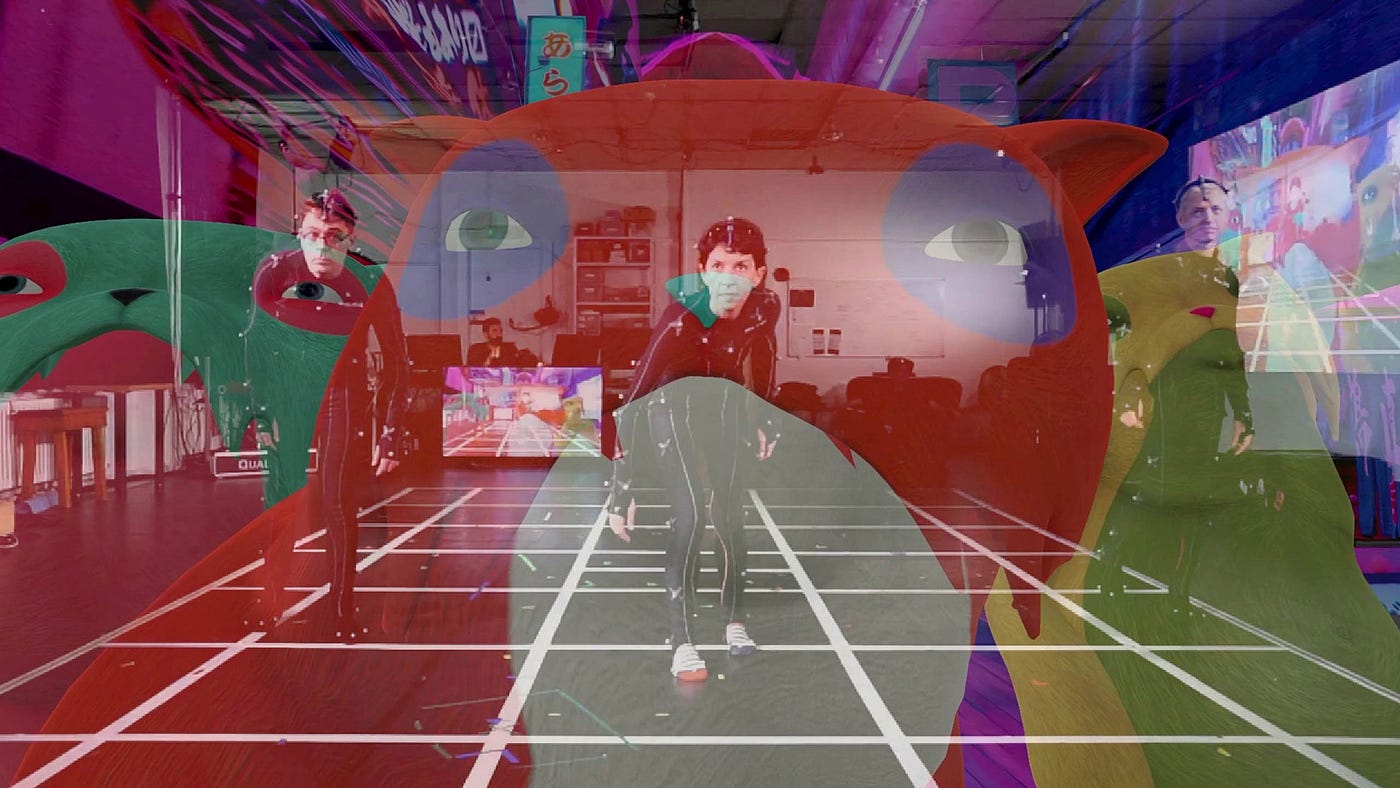
Cosmogony (web browser): Cie Gilles Jobin returns to the festival circuit with a new piece in a similar vein to 2020’s La Comédie Virtuelle: a live streamed virtual production with multiple live dancers, performing for a remote audience. However, this time around, the viewers are not present in a three-dimensional environment, but rather watching a flat screen as the camera swoops and turns and takes us through a variety of surreal landscapes. While the technical accomplishment is impressive, the visuals are appropriately trippy, and the actual viewing experience felt a lot like an extended cut scene from a video game or perhaps a music video, it was difficult to discern what the project was attempting to accomplish at a higher level. The why remains somewhat obscured. — Kathryn Yu (1.21.22)
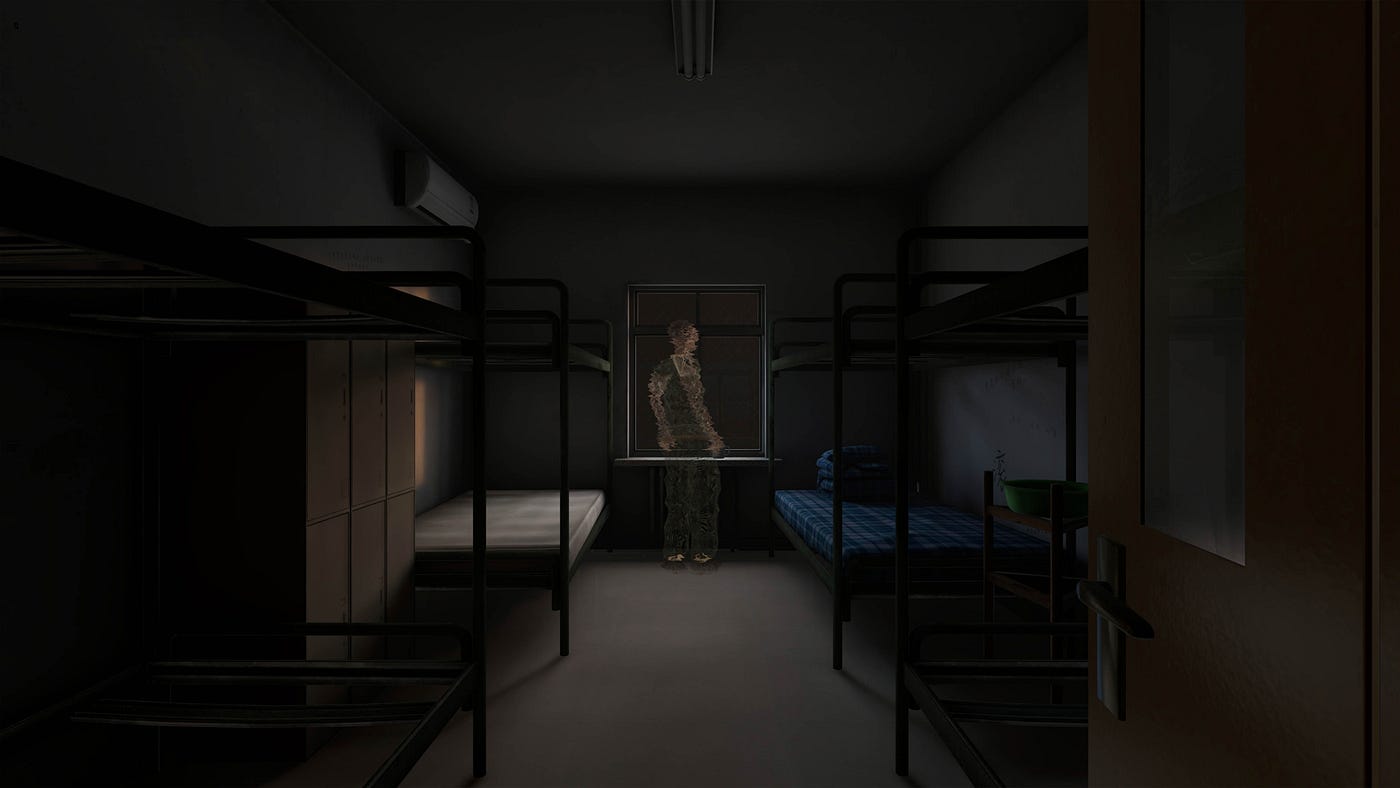
Diagnosia (Viveport): Creator Mengtai Zhang takes us back to a traumatic time in his childhood: the time he was forced to spend in an Internet addiction camp in China in the early 2000s, when the country sought to intervene in what was deemed a looming public health crisis. Through the magic of VR, the Diagnosia team has recreated some of the spaces from the camp, including a chamber designed for solitary confinement, a classroom, and the teens’ living quarters.
In Diagnosia, participants are able to explore the environment freely and examine journal entries from Zhang’s time there; these chilling events, which include incidences of mental and physical abuse, are also brought to life through his narration and old photographs. The fascinating result is somewhere between a memoir, a documentary, and a first person video game. Zhang also cleverly notes that he’s essentially made a video game about his time in video game addition camp, and leaves us with some damning evidence about the groups who are proclaiming that video games and the Internet are ruining young people’s lives in China. — Kathryn Yu (1.20.22)
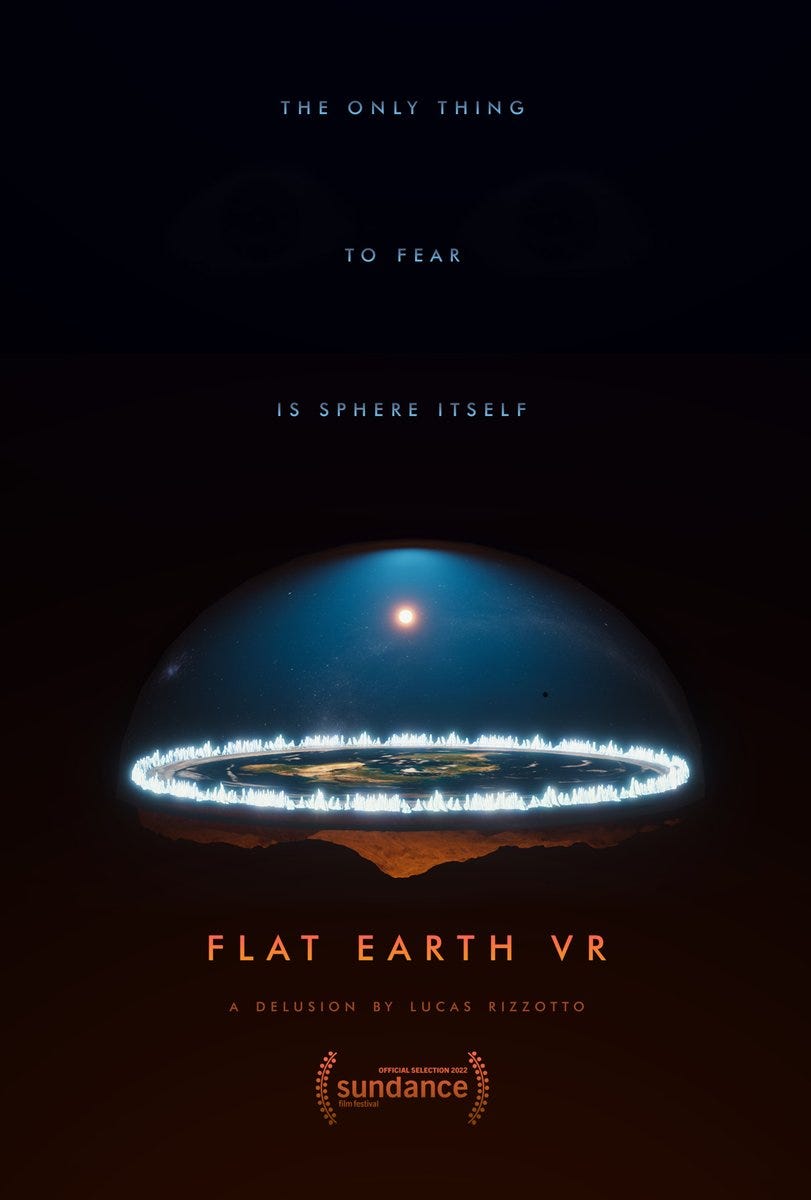
Flat Earth (PC VR): Self-described “VR/AR Futureboi” Lucas Rizzotto has created a strange, quirky, and hilarious satire which posits the participant as the sole occupant of a stolen NASA space shuttle who now has the responsibility of taking photographs to prove — once and for all — that the Earth is indeed flat. If your sense of humor tends towards viral TikTok trends or the latest remixed Twitter meme, then this five minute jaunt into space will probably be your jam.
That said, there’s also a certain sadness in knowing that (per a note at the start), actual Flat Earth-believers helped Rizzotto create this project without recognizing that they were the subjects of a mockumentary. — Kathryn Yu (1.21.22)
I’m torn on this one.
Lucas Rizzotto’s experience that brings the “flat earth” conspiracy to virtual life is a cheeky, polished short that takes one of the more absurd corners of internet culture — the unquestionably unhinged theory that the earth is actually flat and that a vast conspiracy amongst elites exists to conceal this fact from regular folks — and brings it to life in a satirical toy box.
Players find themselves in a Flat Earth Society rocket ship (read: stolen from NASA) powered by some old school tech and are launched into space armed with two analog cameras and one mission: get some killer shots of the earth as it really is: flat as a pancake.
Cheeky, goofy fun from one point of view, and I definitely found myself laughing at the absurd details and commitment to the bit throughout. Yet one thing right at the top split my focus and created a background process in my brain for the whole run.
In the opening text creator Rizzotto notes that the short was developed with some feedback from real “flat eathers” who didn’t know they were contributing to a satire. While this is no more ethically murky than the kind of antics you might find on The Daily Show, and maker knows I spent years with tears streaming down my face from how obtuse some folks can be, the lampshading of this at the top got me thinking about those flat earthers as individuals.
Look: the internet has optimized our society for polarization, and even when I agree with the assessment anything that kinda revels in that polarization leaves a bad aftertaste in my brain these days. So while this piece is funny and polished and does a really neat job of realizing something that is an absurd part of our cultural landscape I can’t help but feeling like its talking to the worst part of myself when it gets me to laugh at the delusions of others. Especially at a time when the inability to agree on what consensus reality is has kinda led us to the deaths of millions worldwide. — Noah Nelson (1.21.22)
Gondwana (PC VR): I am alone. The night is dark and the rain is loud. It’s raining so hard. There is something in the forest behind me, an insect making an odd noise. I can’t quite make out what it is. I’m alarmed, but just a little. I know it’s right behind me. Or is it? And did you see that? The forest, it’s changing. It changes every hour. It’s only been a few minutes but months have flown by. How can that be?
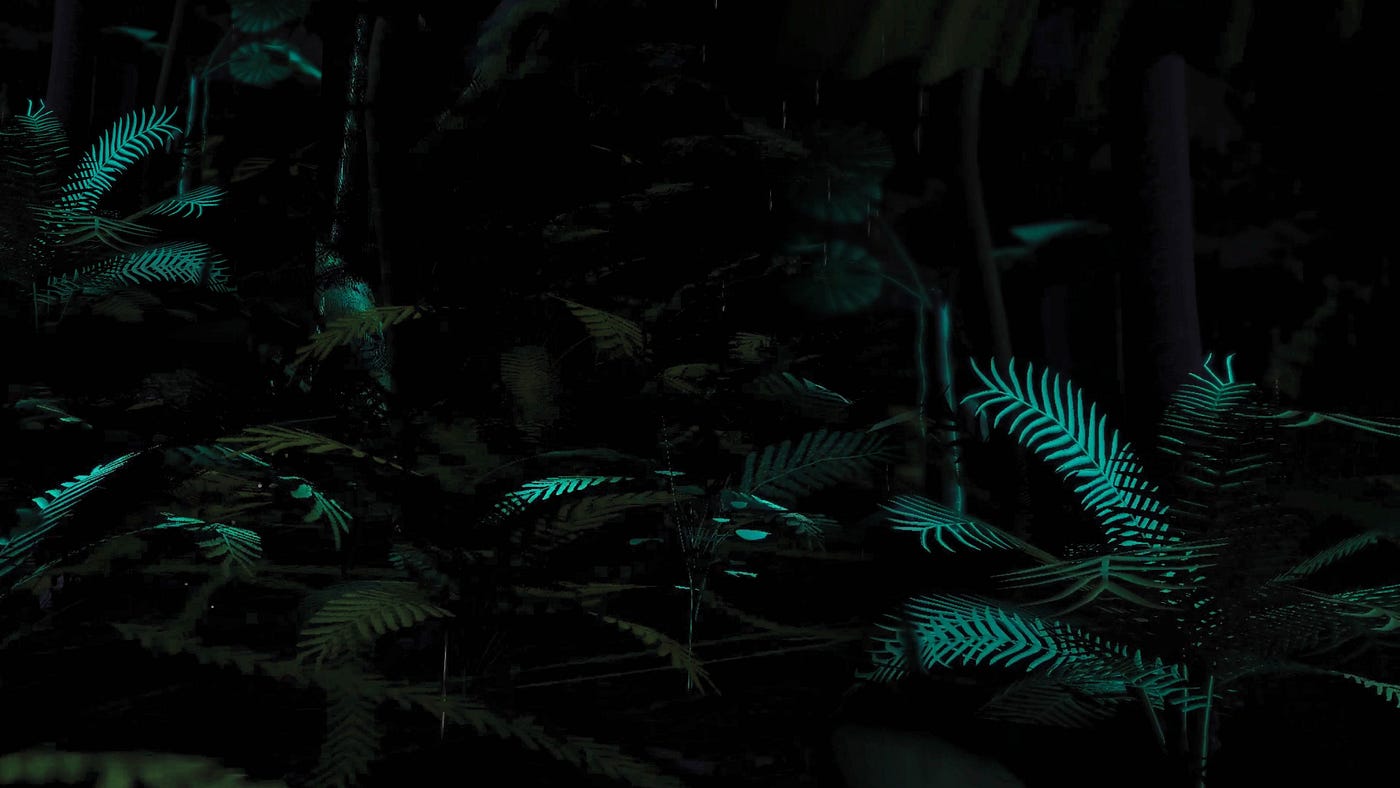
Gondwana is a beautiful, meditative virtual representation of the world’s oldest tropical rainforest, the Daintree Rainforest in Australia. But unlike its real life counterpart, the digital version begins anew every day at 11am Mountain Time and slowly degrades over the course of the next 24 hours as a simulation of climate change. The stunningly detailed forest is always shifting and evolving in Gondwana; it’s remarkably easy to lose yourself among the insects, plants, and trees as you observe the environment around you, while the gorgeous sun rises and sets over and over.
It’s worth noting that the forest’s degradation over time in Gondwana is not inevitable. It can be prevented simply by visiting the forest in VR or 2D on your PC: the more time users log in the Gondwana app, the more resilient the rainforest becomes. And each morning, the rainforest is reborn, with a new, procedurally generated version coming online. Each day in Gondwana is different from the last, with no two days ever repeating themselves.
Gondwana is a stunning statement on the interconnectedness of all living beings and a reminder that even a single person can make a difference, even if it doesn’t appear so at first glance. And if you’ll excuse me for a moment, I’ve got some nature to get back to. — Kathryn Yu (1.21.22)
This durational and partially procedurally generated work recreates — and recreates and recreates — the Daintree rain forest that is the ancestral homeland of the Eastern Kuku Yalanji people in Australia over a sweeping arc of time.
Resetting every 24 hours, Gondwana exists as a kind of time-lapse “What if?” of a real place rendered in a game engine. There is no story or mechanics beyond that of simple traversal, but like the act of getting lost in the words the time spent inside Gondwana is luminous.
Rain falls. Jungles grow at warp speed. Night and day shift at seemingly random paces, with a sunset seemingly happening in real-time only to be replaced by the barest of dawns.
Get No Proscenium’s stories in your inbox
Join Medium for free to get updates from this writer.
SubscribeSubscribe
Gondwana, which can be viewed on a computer monitor on via a 24 hour livestream, is best experienced and understood as one of those artworks that can only fully be appreciated inside virtual reality. It’s deeply meditative nature also goes a long way to shoring up my belief in VR as a medium who primary attribute is the ability to disrupt one’s sense of the regular passage of linear time. — Noah Nelson (1.21.22)
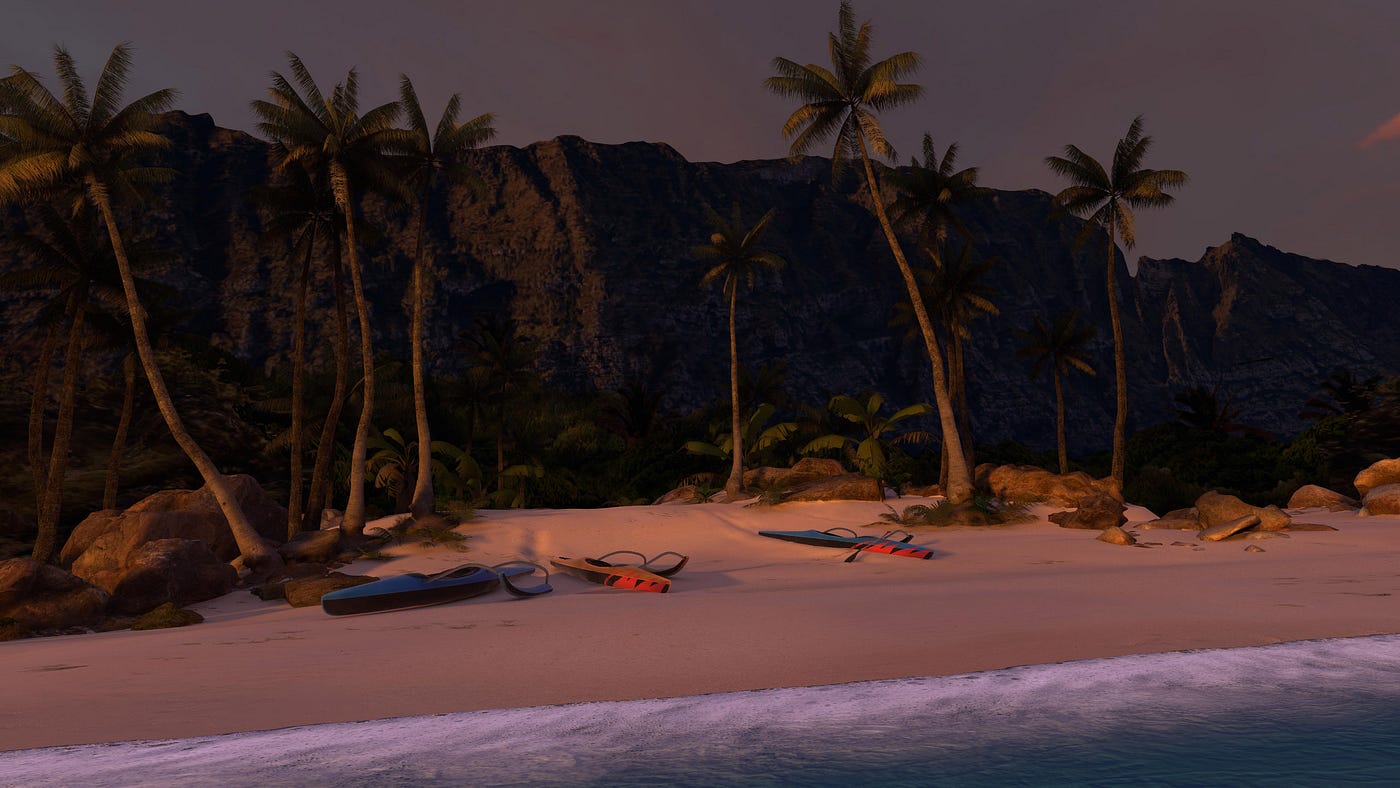
On the Morning You Wake (To the End of the World) (Quest 2): BALLISTIC MISSILE THREAT INBOUND TO HAWAI‘I. SEEK IMMEDIATE SHELTER. THIS IS NOT A DRILL.
Early on the morning of January 13, 2018, the citizens of Hawaii were shocked to find this emergency alert about a ballistic missile threat blasted to all of their smartphones: all 1.4 million of them. Then, they were given a mere 15 minutes to prepare for the strike.
“Chapter 1: Take Cover” of this well-crafted, powerful documentary from Dr. Jamaica Heolimeleikalani Osorio, Archer’s Mark (Notes on Blindness), and Atlas V allows viewers a more personal, intimate glimpse at how different individuals reacted to the news and the chaos that ensued as crowds mobbed buildings looking for shelter and people sped down highways, frantically trying to reach loved ones in time.
On the Morning You Wake does a phenomenal job of placing viewers into the shoes of the Hawaiian people as well as making their panic feel tangible and visceral in VR. — Kathryn Yu (1.20.22)
It would be safe to bet that for most of us in the mainland United States the 2018 incident where a false alarm “ballistic missile” alert was sent to every cell phone user in Hawaii is a moment from the last half decade of chaos that we recall as an oddity. Something we became aware of at the time, perhaps considered as a “that must have been stressful” and set aside.
On the Morning You Wake (To the End of the World) brings that moment into much sharper focus through the eyes of residents of the island who lived through that morning and their experiences make it clear this wasn’t meme fodder but a kind of dress rehearsal for the apocalypse.
Planned as a series, this first chapter left me wondering again for the first time in ages why the hell we have nuclear arsenals capable of turning the planet to ash and just go about like it’s no big deal. As a Gen Xer I grew up in an era very aware of the threat of nuclear annihilation and the end of the Cold War dispelled that fear but not the actual threat.
Yet there’s more to this than existential dread about how fragile global peace actually is. By telling the story of the moment through multiple perspectives, beginning with that of a native Hawaiian and then adding the voices of haole as well, the stories told echo out beyond the historical particulars of this moment and draw in bigger themes of how we are navigating societal level challenges as a whole.
What kind of society produces such a moment that leaves its people so collectively isolated?
It’s a question we don’t dare ask ourselves about the moment we’re currently in, so here it is for us in an extreme case. — Noah Nelson (1.21.22)
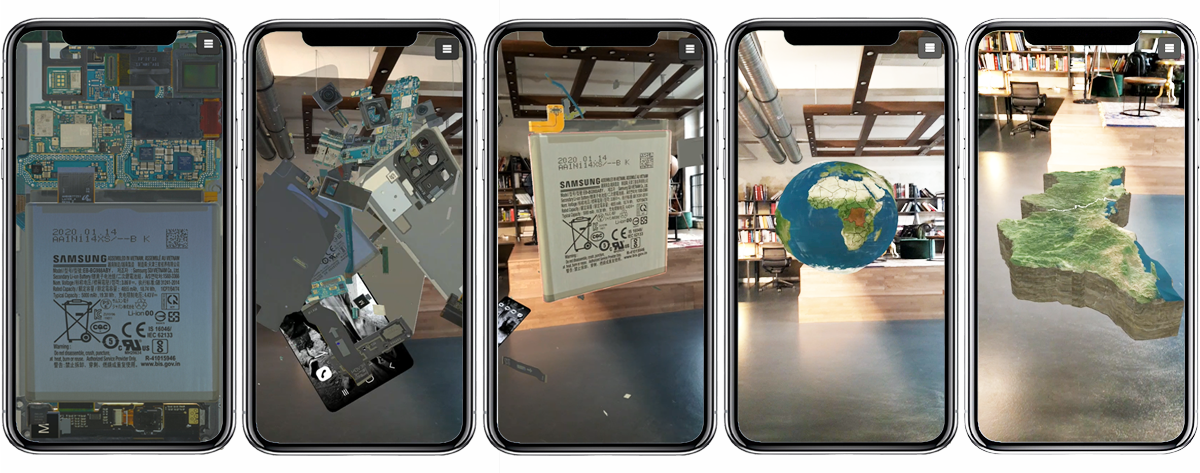
Seven Grams (iOS, Android): Where does your smartphone come from and what’s in it? You likely don’t spend too much time thinking about this, but after using Seven Grams, you will.
In this well-executed interactive project, journalist Karim Ben Khelifa takes us into the Democratic Republic of the Congo using augmented reality to explain how rare earth minerals end up in our personal devices and at what cost. (And, yes, in a very neat hat trick, you’re actually using your smartphone in order to learn more about the guts of your smartphone and the minerals that comprise the “7 grams” referenced in the app’s name.)
But that’s not all. In Seven Grams, we also view the tense, gripping story of a young boy named Chance, as an animated film takes us through his kidnapping and forced labor as a miner. Lastly, we’re presented with a highly polished explainer video which breaks down why it’s so difficult to ensure that cassiterite, tungsten, gold, and cobalt don’t come at a human cost and what we, as consumers, can actually do about it. And the app is available for free on both the iOS and Android stores right now. — Kathryn Yu (1.20.22)
Karim Ben Khelifa’s Seven Grams is two documentaries in one, both delivered via a smartphone app.
One is a history of the object itself, in my case an iPhone, exploded out via augmented reality to explore the inner workings of the device. Four key components are made the focus of this half of the work, delving into the precious metals that make the devices function. From a technical standpoint alone, this is one of the best uses of AR I’ve seen used to deliver a narrative. There’s a bit of magic to the whole idea of “looking inside your phone” that activates just the right amount of curiosity.
With that critical component working, the possibility of going deeper into the story and broadly outlining the abuses in the “artisanal mining industry” — which means people, often children working under slave labor conditions, digging things out by hand — is seized upon. This technique of engaging wonder and curiosity and following up with the difficult facts of the matter are a masterstroke of documentary storytelling.
The second part of Seven Grams is an animated short that recounts the story of Chance, who was kidnapped as a youth and forced to become a solider and miner. Illustrated in a heartbreakingly beautiful pencil technique that contrasts sharply with the CGI of the AR segment. That contrasts works well, as the short operates on the individual scale in a way that the AR portion of the experience never attempts.
Taken together as a whole the project lays out a full picture of the true, human cost of technological “progress.” By tethering these two halves together, the scale of the crisis winds up feeling, while not exactly manageable at least addressable. Something that a bare recitation of the statistics and facts alone can never do. — Noah Nelson (1.24.22)
The State of Global Peace (Quest 1 & 2): This interactive VR project puts the participant into the shoes of a politician standing in front of the United Nations, about to address the General Assembly over Zoom. You’re addressed as the “prime minister” of an unnamed country and instructed to put on an headset, follow the teleprompter, and speak with confidence; then, suddenly, things start to go awry as a group of students hack into your Zoom call and start to question you about the difficult issues of the day: income inequality, climate change, and more. Their video conferenced heads actually fly around the room and come uncomfortably close at moments, attacking your personal space; you’re also fed lines to speak aloud to their floating rectangles as if you were in actual conversation with the students (although the experience doesn’t actually use the microphone on the Quest or any voice recognition tech, from what I could tell).
Many attendees of Sundance New Frontier have likely heard many of the facts — disproportionately large military spending, the threat of disappearing species, incredible wealth disparities — repeated in The State of Global Peace before; that said, the project does use interesting visualizations which are only possible in VR to convey some of the metrics discussed. But unfortunately, the tone and delivery of the content start to run into overly didactic territory and I’m afraid that casting the audience as a head of state (with a very brief onboarding to take on this role) ultimate makes the scenario feel emotionally farfetched. — Kathryn Yu (1.21.22)
I can’t mince words: this one was painful. Not in the “I have learned something and now my heart hurts” way that a good documentary can summon but in the “these people are very earnest but completely inept at moving the needle” way.
It’s not that the issues that are raised in The State of Global Peace are not important, far from it. They’re the table stakes of human survival and justice. That’s articulated strongly in the opening crawl with a statement from UN Secretary-General António Guterres, but that is literally as good as it gets in this VR peace that has all the storytelling skill of a high school debate team which has plowed through their Ritalin prescription in a weekend.
Some people think the failures of the neoliberal experiment are rooted in its proximity to generational wealth and corporate power. What’s often left out of the conversation is the blind belief that a fat stack of statistics hurled at top speed will do anything to change the status quo. It’s a pattern you see instilled into forensics squads across the United States and that vibe carries over into the political sphere. It might work wonders in front of a judge, but with lay people it falls flat every damn time.
So many damning stats are rolled out in this piece — all of them earnestly delivered by a teenager who seems shocked to have learned about the scale of humanity’s hubris, bloodlust, and greed — that I couldn’t pull out just one that had any real emotional impact.
Cast as a Prime Minister who is giving a speech at the UN, we are given prompts to say via teleprompter which then trigger the earnest stat dumps. Only it doesn’t really trigger it. You push a button. Which means you can say ANYTHING to these kids. Which is unintentionally cathartic, because let me tell you I lectured my empty living room something fierce about the inability of center-left politics to address the very issues that were nominally being raised by the walls of “PowerPoint 3D” and floating text through the bare recitation of stats and facts. (Yup, I’m recycling that phrase from an earlier capsule for a reason.)
Look: the human brain is a heuristic universal interface (Publisher Note: Oh, lord, here we go.) that functions through analogy, abstraction, empathy, and continual risk-assessment. While there’s a discipline of thought that weights abstraction (statistics & logic) heavier than the other parts of the human UI it is only one mode that the brain has. Given how many “eminently logical” people carry on with sound but invalid arguments I’m not even convinced that logic is the “highest mode” of the brain. Too many people commit to “logical courses of action” that ignore vast externalities which damage the very field of action their “rational processes” need in order to succeed. (See: late-stage capitalism, now playing in an everything near you.)
If anything the sheer scale of “all these stats are bad” is more fuel for a heel turn than anything else. How many people in the past year have given up hope for the future because it’s all “too big” to deal with? How many times have you thought that thought? (If you haven’t had the thought, let me know your secret. Really.) Stats put us into a transactional mindset, looking for the equation that will balance the formula. Unfortunately there is no technocratic solution for a systemic crisis in human empathy and a dwindling collective will to confront the extinction level event we are living through.
What we need is something bigger. The State of Global Peace looks back towards a model that has failed us time and time again. — Noah Nelson (1.24.22)
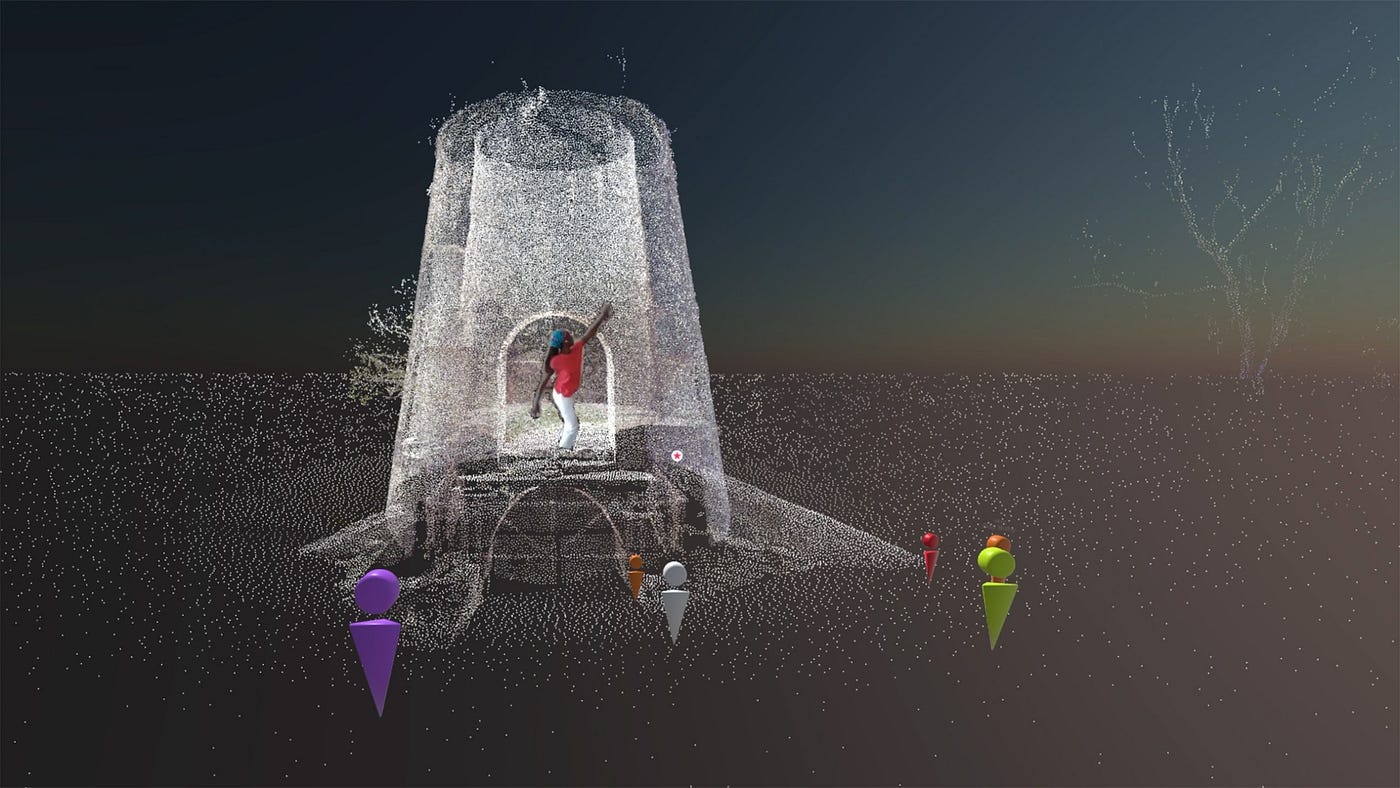
Suga’ — A Live Virtual Dance Performance (desktop/Mozilla Hubs/VR): This guided tour in a custom Mozilla Hubs space takes groups of approximately 20 people through a series of museum like scenes to learn more about the relationship between the sugar trade and slavery in the United States. Participants will pass through a chilling recreation of a slave-carrying ship, a 3D gallery of historical photographs, a VR model of sugar mill (which also acts as a virtual stage to screen a dance performance), and a fantastical space environment filled with the gorgeous illustrations of folks like George Floyd, Harriet Tubman, Malcolm X, and Dr. Martin Luther King, Jr., and more floating in the sky above us, linking the past, present, and future.
The entire experience clocks in at about half an hour, which meant we moved from space to space rather quickly, and the dance portion feels short in comparison. The platform the creators are using also requires attendees to remain close to the docents in virtual space in order to hear, much like a real life museum tour (which seems easily fixable), and the participant avatars are distractingly bright, which makes it much more difficult to appreciate the lower contrast environments. A good chunk of the audio narration during my session was also devoted to telling people where to go, instructing participants to refresh their browsers at the end of every single chapter, and teaching people how to move in virtual space using the keyboard, which kept me from feeling fully present in the experience until the very end.
I applaud the intent behind the project but found myself wondering if it couldn’t benefit from a tighter edit of the content; there were so many good ideas in here that any one of them could have been expanded upon in more detail. — Kathryn Yu (1.21.22)
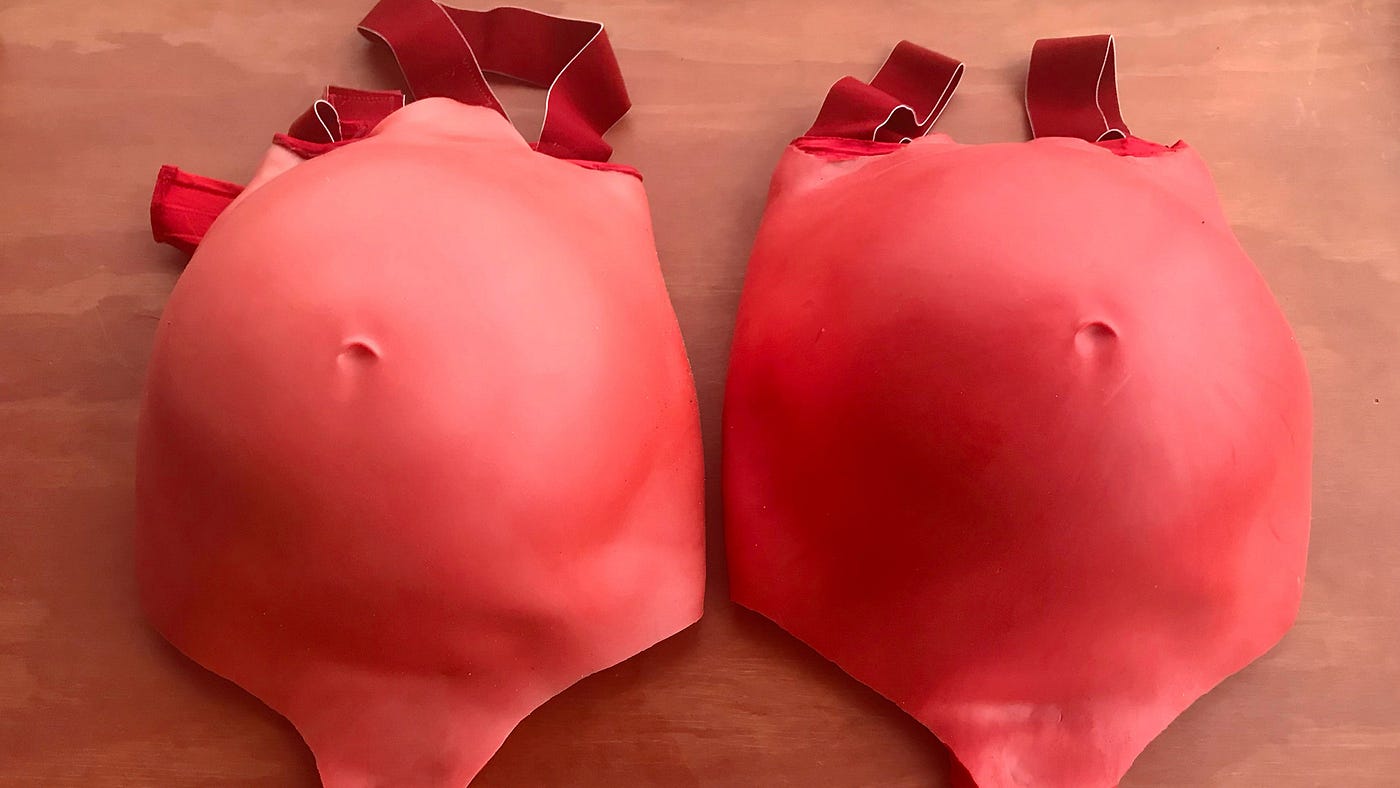
Surrogate (browser-based): Artist Lauren Lee McCarthy dares to go where few other people would go. After many years of being fascinated with the idea of pregnancy as a living process, she decides to become a surrogate mother, despite never having had a child of her own. Surrogate takes us into her journey as she begins interviewing multiple couples to determine if they’re a good fit for another while grappling with what it means to create an art project around an unborn child.
But, of course, there’s a twist to all this. The interviews are filmed but from around corners and behind barricades, as if the camera were spying on the interviewees. Plus, McCarthy has an unusual proposal for each pair: to allow the future parents to literally control the artist’s body through a custom smartphone app. The project takes yet another twist when she decides to become the surrogate for a good friend, with a child who will be conceived via a sperm donor, who they also need to find.
I don’t want to spoil what happens next but I can say for certain: I had no idea what to expect when I began Surrogate and I was surprised and delighted at the strange places it took me. — Kathryn Yu (1.21.22)
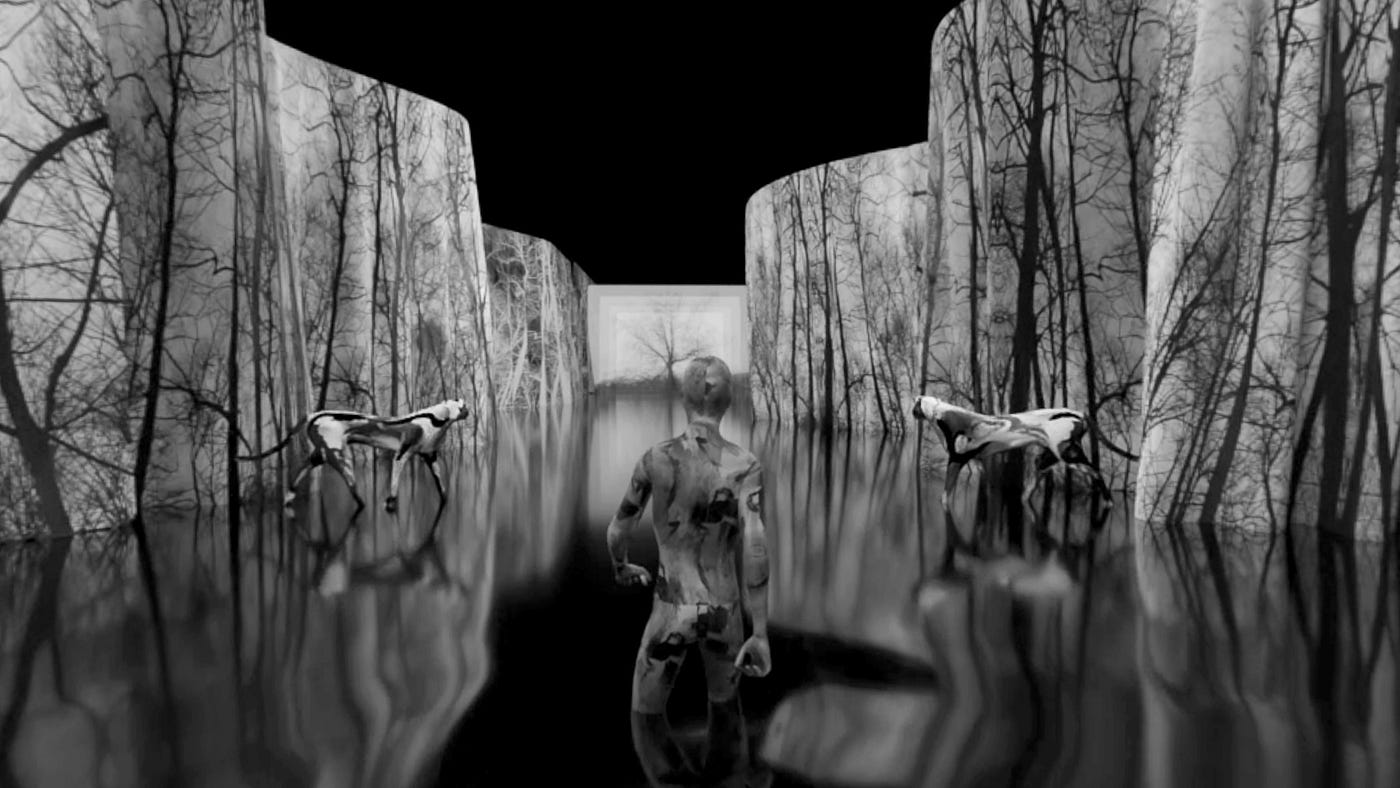
They Dream In My Bones — Insemnopedy II (Quest): This surreal, strange VR film tells the story of the (fictional) scientist Roderick Norman, a researcher in “onirogenetics” — the (also fictional) he founded — where it turns out that your bones can actually store the remnants of your dreams. The result is a hypnotic black-and-white meditation on gender, species, identity, and more, filled with images of curtains, trees, bones, spiders, and water.
More of a “lean back” experience than an interactive one, I actually found the film to be somewhat reminiscent of a dark ride in a theme park. The camera is constantly moving forward with images of rippling water underneath; behind you is only darkness. And on the left and right are a set of parallel billowing curtains which also serve as backdrops for images of trees, swaying in the wind. As you move towards a series of curtains with moving images projected onto them, you magically glide through them as they dissolve one by one, almost like doors or portals opening.
Perhaps none of this makes sense Maybe They Dream In My Bones can’t really be explained in words. Nevertheless, it’s quite enjoyable to sit back and take in the ride. — Kathryn Yu (1.21.22)
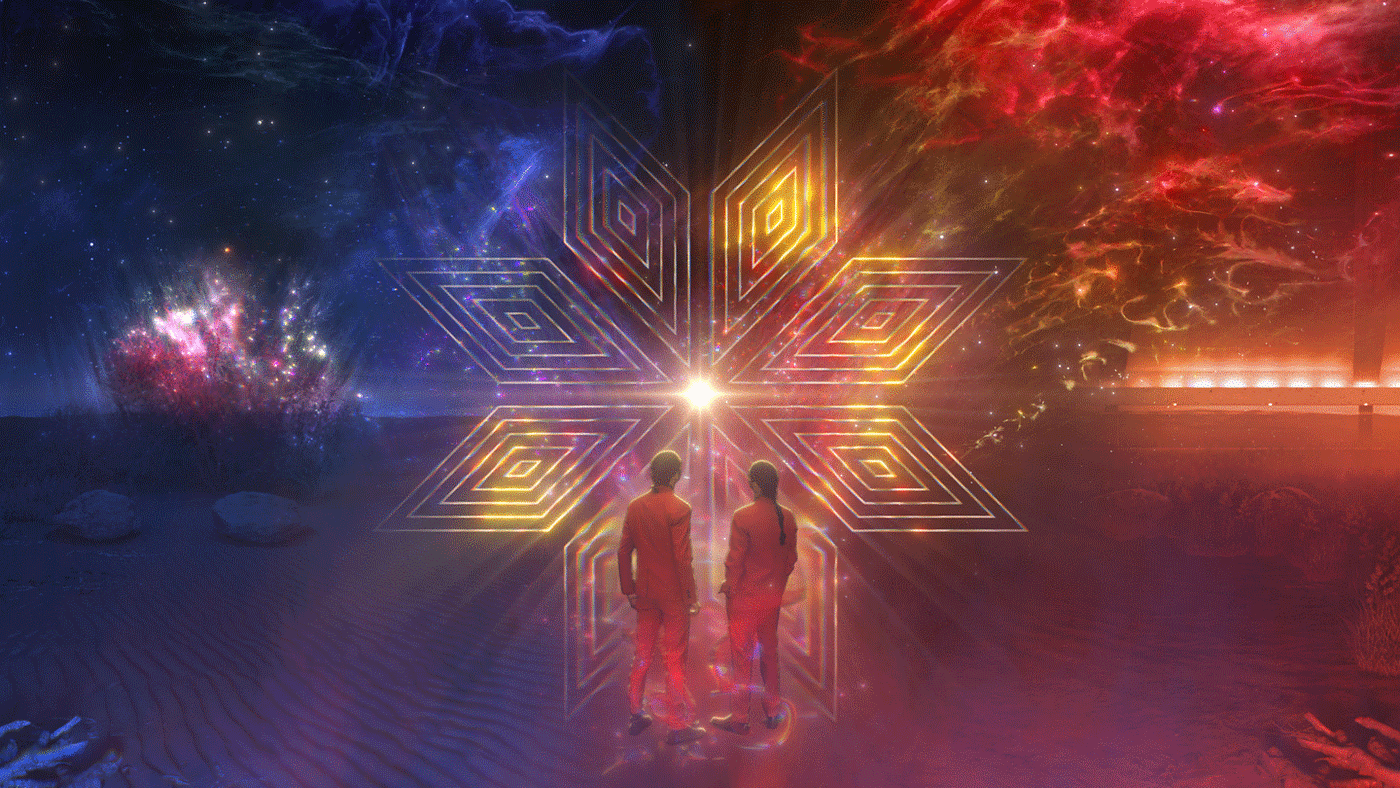
This Is Not a Ceremony (Quest 1 and 2): The buffalo spirit Inii and a creation myth. Two trickster poets cracking wise. A kind Indigenious elder gently guiding the way. Niitsitapi writer and director Ahnahktsipiitaa (Colin Van Loon) finds a way to mix all of these elements together in the thoughtful and powerful cinematic VR piece, This Is Not a Ceremony, which focuses on the real lives of two Indigenious men. The participant is confronted with incidents of sexual abuse of a child and the medical neglect — real life events that happened to Adam North Peigan and Brian Sinclair — as they are re-created in VR.
Despite the two tragedies centered in the piece, This Is Not a Ceremony avoids the gloom-and-doom nature of other similar projects. The use of the trickster poets and elder guide help the viewer to contextualize the material and figure out what to do with the information; the project also manages to provide some semblance of hope and glimpses of Indigenous joy and humor, which I truly appreciate. — Kathryn Yu (1.21.22)
January 20, 2022
Discover the latest immersive events, festivals, workshops, and more at our new site EVERYTHING IMMERSIVE, new home of NoPro’s show listings.
NoPro is a labor of love made possible by our generous Patreon backers. Join them today!
In addition to the No Proscenium website, our podcast, and our newsletters, you can find NoPro on Twitter, Facebook, YouTube, Instagram, in the Facebook community Everything Immersive, and on our Discord.